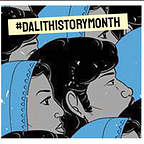Tracing Identities, Caste, and Gender during 1857
The writings on Jhalkari Bai
Situating 1857 and Its Significance
The revolt of 1857 marked a distinct and significant break in early modern Indian history in several ways. Formally, it ended the monopoly of the company as a ruling power in the subcontinent and ushered in the era of the crown rule through the charter act of 1858. The first war of independence and its idea was legitimized and celebrated through popular memory, as well as literary and cinematic documentations that largely maintained a collective, uniform and equalist identity of the uprising, which in some senses vocalized the notion of a “oneness”. This
also is a North-Indian perspective which exaggerated the anti-British sentiment in the light of a newly rising ‘nationalist’ motivation as per a lot of nationalist historians. This however is something questioned by the subaltern school of history, which claims that it was individual self-
interest of the princely and landed class that made them lead the revolt and not an innate idea of nationalism (Gupta, 2007).
In understanding such a complex phenomenon, it is also important to locate the masses who lived at the peripheries of this struggle.
Where do we locate the oppressed in such a context?
Given the popular nationalist context that viewed the coming of 1857 as a culmination of a homogenous, “Indian” identity, it is important to demystify and locate those who were both “otherised” by power structures of their time and negated by histories of ours. Most historians viewed the composition of the revolt being led by the elite, the positions of sepoys owing to growing militarization and globalization of the British army was numerically increased, which meant that the historical purity of the profession was being infiltrated upon by other castes. The very few Dalit narratives of 1857 deploy an impassioned language and are written usually
by Dalit men who are not trained historians. These writers are inspired by altogether different sentiments, revealing the inner dynamics of Dalit politics as well. These writings are now read claiming an erasure of the dalit past and using it for the furtherance of their future.
Dalit Virangana: Jhalkari Bai
Representations of Dalit Viranganas (warriors) can be an important source of insight into gender politics from a Dalit perspective, and a site of struggle over meanings of 1857. They indicate certain ways in which 1857 is remembered and retained by the Dalits, its relationship to their
social and political positioning and sense of belonging to the nation.
Jhalkari Bai Kori, a contemporary of Rani Lakshmibai of Jhansi is one of the most important figures of such a historical intersection. Born on 22 November 1830 in the Jhansi region to a Dalit family, Jhalkaribai was trained in ‘masculine’ arts like horse-riding and martial arts. When
the queen was briefed on Jhalkaribai’s brave acts, she quickly inducted her into the women’s wing of her army and trained her further in warfare, giving her charge of the ‘Durga Dal’. While her identity is majorly missing from textbooks and popular history, the oral memory of her
tales of courage and valor have lived on in stories shared by the Dalit community. They largely remain absent in both British and mainstream Indian historiography.
Tracing the contemporary significance of Dalit Viranganas
Even though the stories of Dalit women like Jhalkari Bai are largely penned by men, they still depict women as actors and agents instead of passive and subordinated subjects. We must also note that sometimes such achievements are juxtaposed with the subdued lives of dalit women
given how they have been denied education, access to spaces, and have been sexually won over by their male counterparts. Oral histories give them the due voices and spaces for stories and discourses that subvert the conventional. Such historiography might not be radically transformative but still progressive given how it manages to create a psychic space for the
subaltern groups, ascribing a dignified sense of belongingness to some extent.
About the author: Aditi Verma is a final year student of political science and economics at St. Stephen’s College, University of Delhi. She is from Rajasthan and her research interests revolve around gendered caste identities and related public policy frameworks.
Citations
1. Gupta, C. (2007). Dalit “Viranganas” and Reinvention of 1857. Economic and Political
Weekly, 42(19), 1739–1745. http://www.jstor.org/stable/4419579
2. Liddle, J., & Joshi, R. (1985). Gender and Imperialism in British India. Economic and
Political Weekly, 20(43), WS72–WS78. http://www.jstor.org/stable/4374973
3. Reactivating the Past: Dalits and Memories of 1857 on JSTOR. (n.d.). www.jstor.org.
https://www.jstor.org/stable/4419578
4. Sonpimple, U. (2015). Remembering Jhalkari Bai, Dalit Hero of 1857 War against British written by Upendra Sonpimple.
